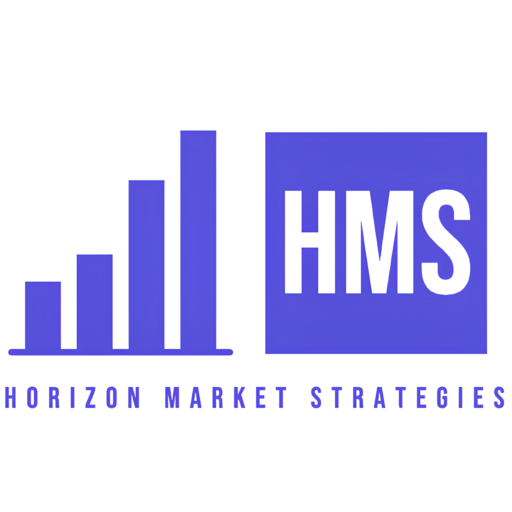Sea Food Market: Size, Share, Trends & Forecast (2024-2029)
The report covers a comprehensive analysis segmented by Type (Fish, Shrimp, Other Seafood), by Form (Canned, Fresh / Chilled, Frozen, Processed, Others), by Distribution Channel (Off-Trade, On-Trade, Others), by End-user (Household Consumers, Food Service Industry, Retail Sector, Food Processing Industry, Others), by Geography (North America, South America, Asia Pacific, Europe, The Middle East, Africa).
Sea Food Market Snapshot
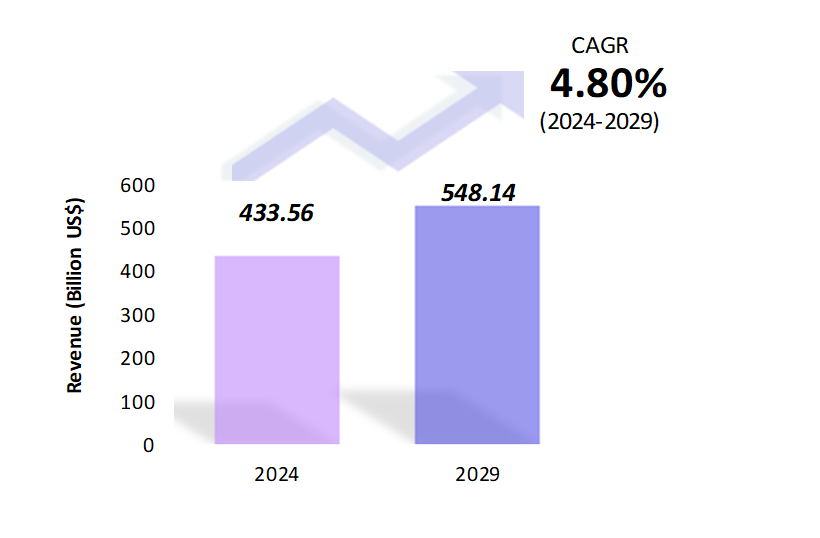
Sea Food Market Overview
The global Seafood market is estimated to be at $433.56 Bn in 2024 and is anticipated to reach $548.14 Bn in 2029. The global Seafood market is registering a CAGR of 4.8% during the forecast period 2024-2029.
The global seafood market is characterized by significant growth opportunities driven by sustainability, health trends, and technological advancements. This growth is fueled by rising consumer awareness about the health benefits of seafood, increased disposable incomes, and expanding middle-class populations in emerging economies. There’s a growing emphasis on sustainable fishing practices and aquaculture.
Consumers are increasingly concerned about overfishing and environmental impacts. Organizations like the Marine Stewardship Council (MSC) certify fisheries that meet sustainability standards. With wild fish stocks under pressure, aquaculture (fish farming and other seafood) is expanding rapidly. Innovations in aquaculture technology, such as recirculating aquaculture systems (RAS) and genetic improvements, enhance productivity and sustainability.
Norway is one of the top exporters of salmon, known for its superior farmed salmon. The Norwegian salmon sector, for instance, is a prime illustration of how sustainability and technology may be successfully combined. Mowi ASA, formerly known as Marine Harvest ASA, is a global provider employing advanced aquaculture techniques and adhering to strict environmental standards. Norway’s focus on innovation and sustainability has helped it maintain a competitive edge in the global seafood market.
Sea Food Market Coverage
| Historical & Forecast Period | 2018-2029 |
| Base Year | 2023 |
| Forecast Period | 2024-2029 |
| Units | Billion US$ |
| Segments | Type, Form, Distribution Channel, End-user |
| Geographies | North America, South America, Asia Pacific, Europe, The Middle East, Africa |
| Key Vendors | Austevoll Seafood ASA, Maruha Nichiro Corp., Nissui Corp., Sysco Corp., Thai Union Group PCL |
Key Geographies of Sea Food Market, 2023
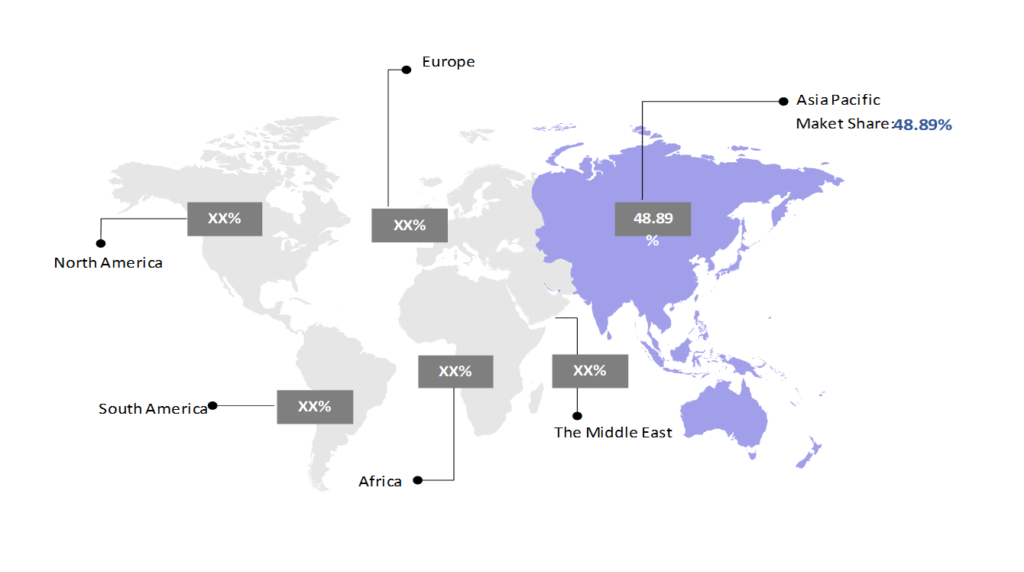
Porter’s 5 Forces Analysis of Sea Food Market
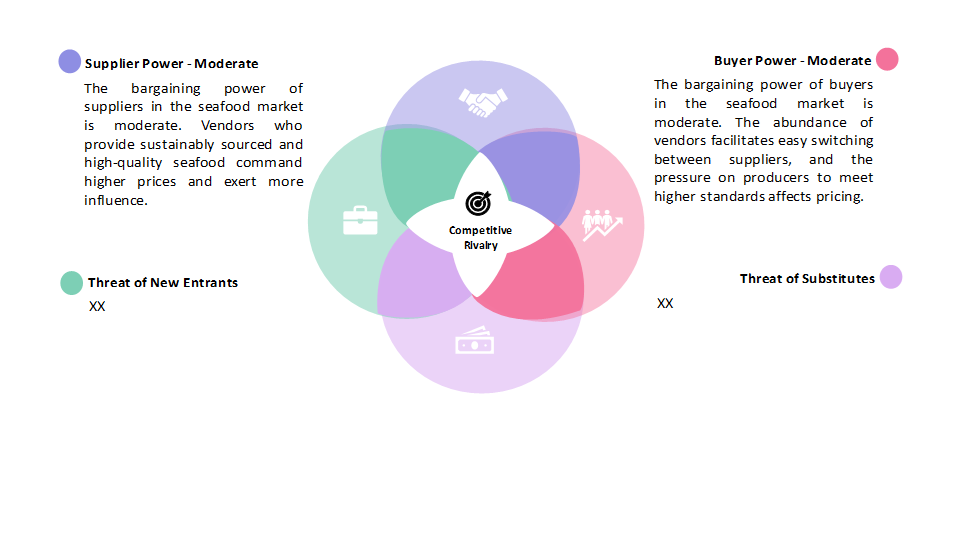
Sea Food Market Trends
There has been much growth and change in the global seafood sector in recent years, primarily due to shifting consumer tastes, technological improvements in aquaculture, concerns about sustainability, and geopolitical issues. Demand for high protein-rich diets has increased as people’s health awareness has led them to hunt for more nutrient-dense food options. Seafood fits in nicely with this desire because of its high protein content and low saturated fat content. It is thought to be a good source of protein and has important omega-3 fatty acids, that are good for the heart and brain. For instance, the demand for omega-3 supplements, which are frequently made from fish oil, has increased dramatically.
The market is changing due to the incorporation of technology into seafood supply chains, which includes enhanced logistics and distribution networks and blockchain for traceability. To ensure traceability from capture to customer, businesses such as IBM are collaborating with seafood producers to apply blockchain technology. The rise of e-commerce platforms for seafood sales, such as Alibaba’s Fresh Hema in China, is making it easier for consumers to access a wide range of seafood products.
The market is seeing a diversification of seafood products, including ready-to-eat meals, value-added products, and alternative seafood products, as consumers seek variety and convenience and diets like the Mediterranean diet, which emphasizes fish consumption, have gained popularity for their health benefits. For instance, to satisfy consumer demand for various sustainable solutions, businesses such as Good Catch and BlueNalu are creating seafood substitutes based on plants and cell cultures.
Brands also offer pre-marinated, pre-cooked, and easy-to-prepare seafood products to cater to busy lifestyles. Consumer awareness and demand for sustainably sourced seafood are increasing, driven by concerns about overfishing, environmental impact, and ethical practices. For instance, many shops and customers select products that have earned the Marine Stewardship Council (MSC) accreditation, which attests to sustainable fishing methods.
Large businesses such as Whole Foods and Walmart have committed to obtaining fish from sustainable sources, frequently necessitating certification from accredited organizations. As the demand for seafood rises and natural fish stocks fall, aquaculture, or fish breeding, has expanded quickly. Technological advancements in aquaculture are making it a more viable and sustainable option. Norway is a prime example with its sophisticated aquaculture sector that produces premium, responsibly farmed salmon. Recirculating aquaculture systems (RAS) are one innovation that is increasing fish production’s efficiency and environmental friendliness.
Sea Food Market Driving Factors
Seafood consumption is rising along with the worldwide population, particularly in urban areas. Urban inhabitants frequently have more access to a wider variety of food options and higher disposable expenditures. For instance, the fast urbanization and rising middle-class wages in China and India have resulted in a rise in seafood consumption. China, the largest seafood consumer globally, has seen a significant rise in per capita seafood consumption over the past few decades. Seafood is perceived as a healthy food choice due to its high protein content and beneficial omega-3 fatty acids. Demand is being driven by rising knowledge of seafood’s health advantages. For example, in the United States, the demand for seafood has been steadily rising due to campaigns and recommendations by health groups such as the American Heart Association, which have encouraged the eating of fish for cardiovascular health.
Technological developments in aquaculture have allowed for a sustainable increase in seafood production. Breeding, nutrition, and disease control innovations have lowered costs and increased yields. As an illustration, Norway, a pioneer in salmon farming, has adopted innovative aquaculture technologies, including underwater drones to monitor fish health and automated feeding systems. This has aided Norway in continuing to be one of the top salmon exporters. The ease with which seafood may now be imported and exported has increased market reach due to the globalization of the seafood industry and advancements in logistics. For instance, free trade agreements and better cold chain logistics have made it possible for nations like Vietnam and Chile to become important seafood exporters, serving markets in North America, Europe, and Asia.
Consumption of seafood is increasing due to changes in dietary choices, such as the growing popularity of flexitarian and pescatarian diets. The seafood market is significantly shaped by government regulations and subsidies. Supporting the development of aquaculture and sustainable fishing methods can increase production and market expansion.
Sea Food Market Challenges
The global seafood market faces various challenges impacting stakeholders, including producers, suppliers, distributors, and consumers. These problems are intricate and multidimensional, frequently impacted by social, political, economic, and environmental variables. Fish supplies are depleted by overfishing more quickly than they can be replenished, which causes fisheries to collapse and biodiversity loss. Climate change affects sea temperatures, ocean acidification, and weather patterns, impacting fish habitats, migration patterns, and spawning grounds.
For instance, the habitat range of lobsters is shifting northward due to rising waters in the Gulf of Maine. This shift is impacting the local lobster industry, which has to adapt to changing stock locations and potential decreases in population. IUU fishing undermines efforts to manage fisheries sustainably, causes economic losses, and can involve human rights abuses. For instance, West African waters are heavily impacted by IUU fishing. Foreign illegal fishing vessels take advantage of the resources in the area, causing local fishermen to suffer large financial losses and adding to the region’s food poverty.
The seafood supply chain is complex and vulnerable to disruptions caused by geopolitical tensions, natural disasters, and pandemics. Navigating the various national and international regulations on seafood trade, sustainability standards, and food safety can be challenging and costly for businesses. For instance, exporters must provide thorough documentation to comply with the European Union’s strict seafood import restrictions, which are designed to prevent IUU fishing and ensure sustainability. It can be especially difficult for small-scale producers in developing nations to comply.
Demand for specific seafood products has fluctuated due to customer decisions affected by the growing popularity of plant-based diets and worries about mercury levels in fish. For example, there has been an increase in demand for plant-based seafood alternatives, impacting traditional seafood markets. Marine pollution, including plastic waste and chemical contaminants, affects seafood safety and marine ecosystems. The Great Pacific Garbage Patch, a massive accumulation of marine debris, threatens marine life and, subsequently, the seafood industry. Microplastics ingested by marine organisms can enter the food chain, raising concerns about seafood safety and consumer health impacts.
Sea Food Market – Key Industry News
- In April 2024, Br. Birkeland AS, an affiliated company of Austevoll Seafood ASA (AUSS), entered into agreements to sell all shares of its two wholly owned subsidiaries, Br. Birkeland Fiskebåtrederi AS and Talbor AS.
- In October 2023, Maruha Nichiro Corporation merged its consolidated subsidiaries, Marine Access Corporation and Maruha Nichiro Retail Service Co., Ltd.
- In August 2023, Maruha Nichiro Corporation signed a collaboration agreement with UMAMI Bio Works to develop and bring cell-cultivated seafood products to market jointly.
Sea Food Market Competitive Landscape
The seafood market is moderately competitive, with major players like Austevoll Seafood ASA, Maruha Nichiro Corp., Nissui Corp., Sysco Corp., and Thai Union Group PCL leading the way. For instance, Austevoll Seafood ASA excels with its vertically integrated operations, covering fishing, processing, and distribution to ensure high efficiency and product quality. Maruha Nichiro Corp., a Japanese provider, emphasizes sustainable practices and innovation, continually developing new seafood products to cater to evolving consumer demands. Similarly, Nissui Corp. is noted for its technological advancements and strict quality control in aquaculture and processing, serving both domestic and international markets.
One of the largest international food distributors, Sysco Corp., provides seafood to many customers, including restaurants and healthcare facilities, by utilizing its broad network and commitment to customer service. Thai Union Group PCL, known for brands like Chicken of the Sea, prioritizes sustainability through initiatives like the SeaChange program, aiming to drive positive change across the seafood industry. These companies highlight the importance of sustainability, innovation, and operational efficiency in maintaining competitive positions in the global seafood market. The companies primarily use acquisitions, R&D, partnerships, and technological launches. Several important entities in the Seafood market include Austevoll Seafood ASA, Maruha Nichiro Corp., Nissui Corp., Sysco Corp., Thai Union Group PCL, and others.
Sea Food Market Company Share Analysis, 2023 (%)
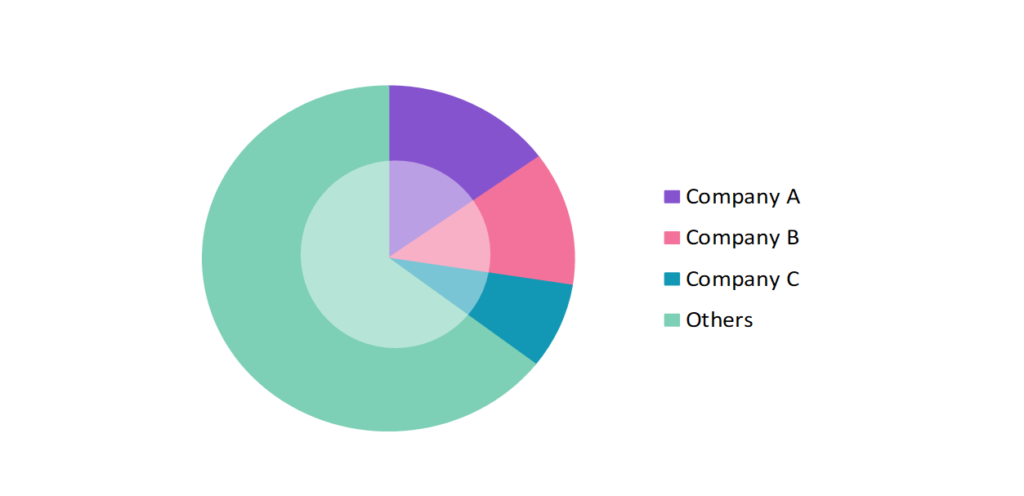
Sea Food Market – Key Companies

Reason to Buy from us

Table of Contents
| 1. Introduction |
|---|
| 1.1. Research Methodology |
| 1.2. Scope of the Study |
| 2. Market Overview / Executive Summary |
| 2.1. Global Sea Food Market (2018 – 2022) |
| 2.2. Global Sea Food Market (2023 – 2029) |
| 3. Market Segmentation |
| 3.1. Global Sea Food Market by Type |
| 3.1.1. Fish |
| 3.1.2. Shrimp |
| 3.1.3. Other Seafood |
| 3.2. Global Sea Food Market by Form |
| 3.2.1. Canned |
| 3.2.2. Fresh / Chilled |
| 3.2.3. Frozen |
| 3.2.4. Processed |
| 3.2.5. Others |
| 3.3. Global Sea Food Market by Distribution Channel |
| 3.3.1. Off-Trade |
| 3.3.2. On-Trade |
| 3.3.3. Others |
| 3.4. Global Sea Food Market by End-user |
| 3.4.1. Household Consumers |
| 3.4.2. Food Service Industry |
| 3.4.3. Retail Sector |
| 3.4.4. Food Processing Industry |
| 3.4.5. Others |
| 4. Regional Segmentation |
| 4.1. North America |
| 4.1.1. The U.S |
| 4.1.2. Canada |
| 4.1.3. Mexico |
| 4.2. South America |
| 4.2.1. Brazil |
| 4.2.2. Argentina |
| 4.2.3. Colombia |
| 4.2.4. Chile |
| 4.2.5. Rest of South America |
| 4.3. Asia Pacific |
| 4.3.1. China |
| 4.3.2. India |
| 4.3.3. Japan |
| 4.3.4. South Korea |
| 4.3.5. Rest of Asia Pacific |
| 4.4. Europe |
| 4.4.1. UK |
| 4.4.2. Germany |
| 4.4.3. Italy |
| 4.4.4. France |
| 4.4.5. Spain |
| 4.4.6. Rest of Europe |
| 4.5. The Middle East |
| 4.5.1. Turkey |
| 4.5.2. UAE |
| 4.5.3. Saudi Arabia |
| 4.5.4. Rest of the Middle East |
| 4.6. Africa |
| 4.6.1. Egypt |
| 4.6.2. South Africa |
| 4.6.3. Rest of Africa |
| 5. Value Chain Analysis of the Global Sea Food Market |
| 6. Porter Five Forces Analysis |
| 6.1. Threats of New Entrants |
| 6.2. Threats of Substitutes |
| 6.3. Bargaining Power of Buyers |
| 6.4. Bargaining Power of Suppliers |
| 6.5. Competition in the Industry |
| 7. Trends, Drivers, and Challenges Analysis |
| 7.1. Market Trends |
| 7.1.1. Market Trend 1 |
| 7.1.2. Market Trend 2 |
| 7.1.3. Market Trend 3 |
| 7.2. Market Drivers |
| 7.2.1. Market Driver 1 |
| 7.2.2. Market Driver 2 |
| 7.2.3. Market Driver 3 |
| 7.3. Market Challenges |
| 7.3.1. Market Challenge 1 |
| 7.3.2. Market Challenge 2 |
| 7.3.3. Market Challenge 3 |
| 8. Regulatory Landscape |
| 9. Competitive Landscape |
| 9.1. Austevoll Seafood ASA |
| 9.2. Maruha Nichiro Corp. |
| 9.3. Nissui Corp. |
| 9.4. Sysco Corp. |
| 9.5. Thai Union Group PCL |
| 9.6. Company 6 |
| 9.7. Company 7 |
| 9.8. Company 8 |
| 9.9. Company 9 |
| 9.10. Company 10 |
Sea Food Market – Frequently Asked Questions (FAQs)
What is the current size of the global Seafood market?
The market size for the global seafood market in 2024 is $433.56 Bn.
Who are the major vendors in the global Seafood market?
The major vendors in the global seafood market are Austevoll Seafood ASA, Maruha Nichiro Corp., Nissui Corp., Sysco Corp., and Thai Union Group PCL.
Which segments are covered under the global Seafood market segments analysis?
This report offers in-depth insights into each type, form, distribution channel, and end-user.
